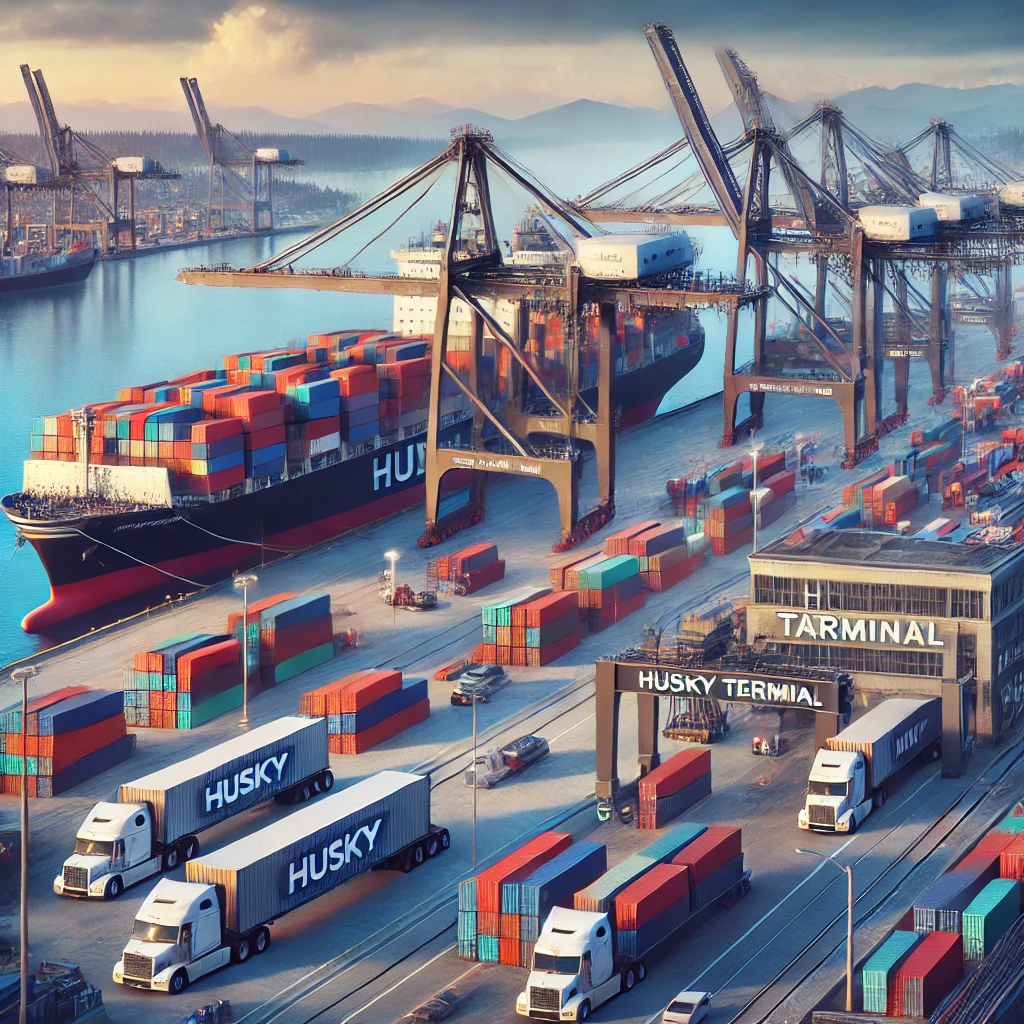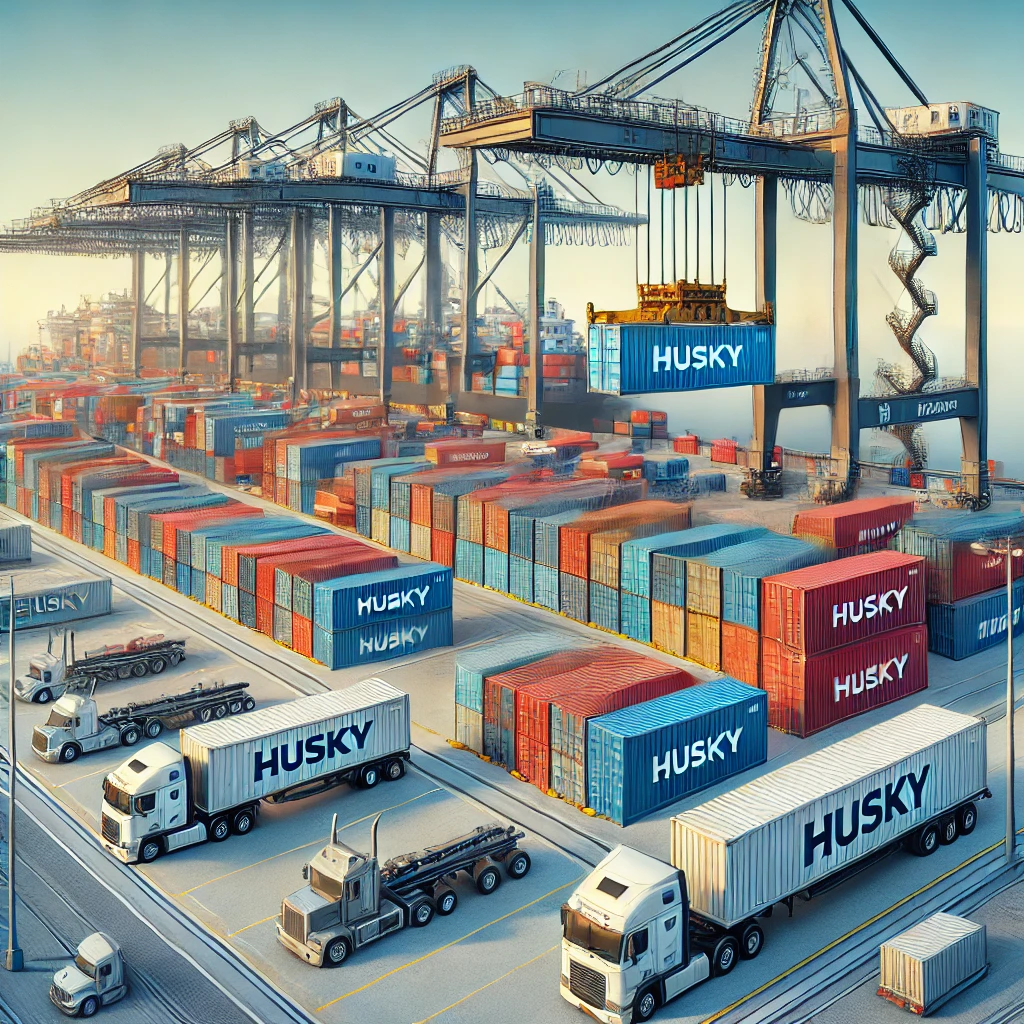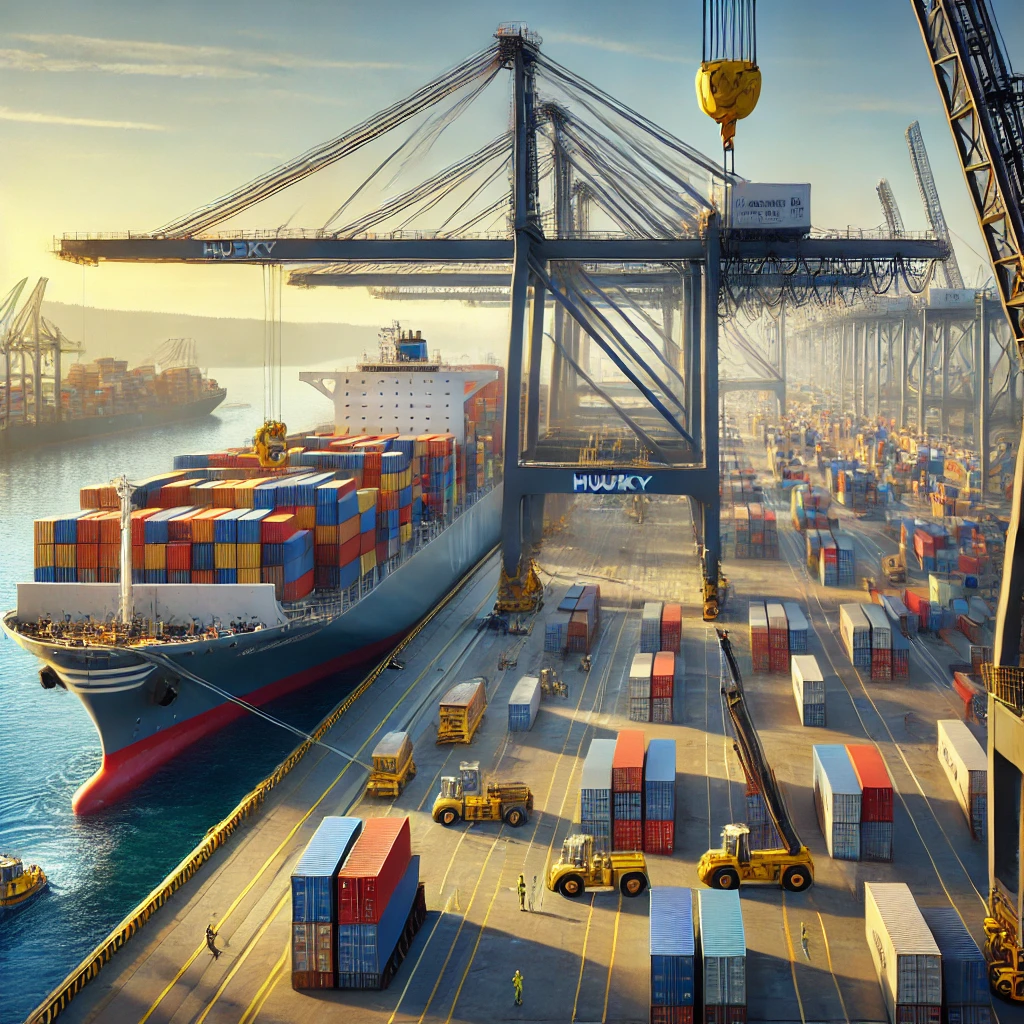Demystifying Husky Terminal Tacoma, Washington for Professionals
In this guide, we will explore the features, operations, and benefits of Husky Terminal, its role in supply chain management, and why it is a crucial hub for freight forwarding and logistics professionals.

What is Husky Terminal?
Husky Terminal is a highly automated container terminal in Tacoma, Washington, that serves as a strategic point for international shipping routes. It is part of the Northwest Seaport Alliance (NWSA), a partnership between the Ports of Tacoma and Seattle, making it a key gateway for trade between Asia, North America, and other global markets.
Key Facts About Husky Terminal:
✔️ Location: Tacoma, Washington, USA
✔️ Operator: Husky Terminal & Stevedoring, LLC
✔️ Affiliation: Part of the Northwest Seaport Alliance (NWSA)
✔️ Main Cargo: Containerized cargo, intermodal shipments
✔️ Connectivity: Rail, trucking, and ocean freight services

Key Features of Husky Terminal
1. Advanced Cargo Handling Technology ⚙️
- Equipped with state-of-the-art gantry cranes for efficient container loading and unloading.
- Uses automated stacking cranes (ASCs) to enhance operational speed and accuracy.
- Incorporates real-time tracking systems for cargo monitoring.
2. Intermodal Connectivity 🚛🚢
- Direct access to major highways for truck transportation.
- Rail connectivity via the BNSF and Union Pacific rail lines, providing seamless transport across the U.S.
- Deepwater berths to accommodate large vessels.
3. Strategic Location for Trade 🌏
- Proximity to Seattle-Tacoma International Airport, facilitating air cargo connections.
- Acts as a gateway for trans-Pacific trade, making it a crucial point for businesses importing and exporting goods.
- Quick turnaround times for ships and containers, improving supply chain efficiency.
4. Environmental Initiatives 🌿
- Commitment to sustainable port operations through reduced emissions and eco-friendly infrastructure.
- Implements shore power systems to reduce vessel emissions while docked.
- Part of green shipping corridor initiatives promoting sustainable logistics.
Husky Terminal’s Role in Global Trade
Husky Terminal serves as a critical hub for handling cargo between North America and international markets, particularly Asia. Its strategic position and efficient logistics infrastructure make it a preferred terminal for shipping lines and freight forwarders.
Industries benefiting from Husky Terminal:
✔️ Retail and E-commerce – Fast shipping solutions for imported goods.
✔️ Manufacturing – Reliable transport for raw materials and components.
✔️ Automotive – Handling of vehicle parts and finished automobiles.
✔️ Agriculture and Food – Export of grains, seafood, and perishable items.

Advantages of Using Husky Terminal for Shipping
✅ Faster Turnaround Times
- Modernized container handling equipment ensures quick loading and unloading.
- Optimized scheduling systems reduce port congestion and delays.
✅ Cost-Effective Shipping
- Competitive terminal fees for freight forwarding companies and shippers.
- Efficient intermodal transport options reduce overall supply chain costs.
✅ Secure and Reliable Operations
- 24/7 security monitoring ensures safe cargo handling.
- Compliance with U.S. Customs and Border Protection (CBP) regulations.
✅ Support for Large-Scale Logistics
- Ability to handle ultra-large container vessels (ULCVs).
- Efficient yard management to streamline cargo movement.
How to Track Cargo at Husky Terminal
For businesses looking to track their shipments, Husky Terminal offers an online tracking system through its terminal operating system (TOS). Here’s how you can track cargo:
🔹 Step 1: Visit the official Husky Terminal tracking portal.
🔹 Step 2: Enter your container number or bill of lading (BOL).
🔹 Step 3: View real-time location updates and estimated delivery times.
🔹 Step 4: Contact Husky Terminal customer support for additional assistance if needed.
Best Practices for Shipping Through Husky Terminal
✔️ Plan Ahead: Book container space in advance to avoid delays.
✔️ Ensure Compliance: Follow all customs clearance and documentation requirements.
✔️ Use Technology: Take advantage of Husky Terminal’s digital tracking tools.
✔️ Coordinate Logistics: Work with freight forwarders and carriers for smooth operations.
✔️ Monitor Shipping Trends: Stay updated on port congestion, tariffs, and regulations.

Frequently Asked Questions (FAQs)
Q1: What shipping carriers operate at Husky Terminal?
📌 Major shipping lines such as Maersk, MSC, Evergreen, and COSCO frequently use Husky Terminal for international trade.
Q2: What are Husky Terminal’s operating hours?
📌 Typically, Husky Terminal operates 24/7 for cargo handling, but gate hours for truck pick-ups and drop-offs vary.
Q3: Can I schedule a port visit or tour of Husky Terminal?
📌 Access is usually restricted to authorized personnel, logistics partners, and terminal operators.
Q4: How does Husky Terminal support sustainability?
📌 Husky Terminal uses low-emission equipment, shore power systems, and digital optimization tools to reduce environmental impact.
Q5: How do I contact Husky Terminal for customer service?
📌 You can reach them via their official website or through the Port of Tacoma’s customer support line.
Conclusion
Husky Terminal in Tacoma, Washington, is a leading container terminal that supports global trade, intermodal connectivity, and supply chain efficiency. With its state-of-the-art technology, strategic location, and commitment to sustainability, it remains a top choice for shipping lines, freight forwarders, and logistics companies.
By understanding its key features, operational advantages, and best practices, businesses can optimize their shipping processes, reduce costs, and enhance logistics performance. 🌎🚢📦
